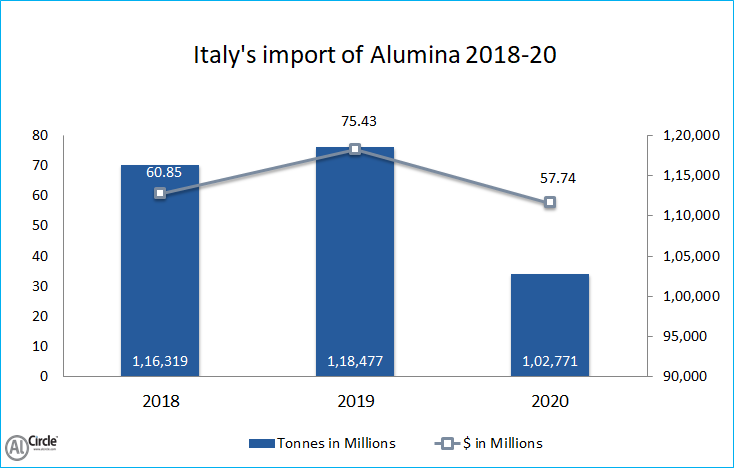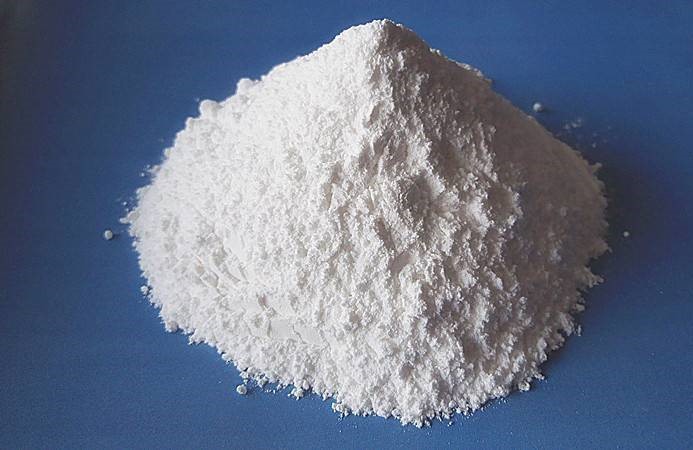

The economy of Italy was massively stroked by the worldwide financial crash and only emerged from a recession in 2015; however, the country’s GDP remained around 4% lower than the 2007 level. Now, after it languished in 2019, the economy was severely affected by the COVID-19 pandemic, as the country was the first in Europe to be hit by the pandemic. As per the January 2021 update of the World Economic Outlook, the IMF has revised its GDP growth projections for Italy to 3% in 2021 and 3.6% in 2022.

The European nation with a long Mediterranean coastline has recorded 234,796 tonnes of alumina import during 2018-19 and the expenditure that occurred for the import remained at $136.28 million. The import for 2020 stood at 102,771 tonnes and the revenue expended remained at $57.74 million. When the import volume and expenditure for 2020 gets added with the existing two years, it illustrates 337,567 tonnes and $136.28 million respectively.

Italy’s import of alumina in 2018 stood at 116,319 tonnes and the expenditure accounted for the import remained at $60.85 million, whereas, in 2019, the import saw a rise by 1.85%, as the export volume grew to 118,447 tonnes and the expenditure also surged to $75.43 million.
The import for 2020 demonstrated a drop by 13.25%, as the import volume fell to 102,771 tonnes and the expenditure dipped to $57.74 million.
Italy’s major trading destinations for the importation of alumina are Bosnia Herzegovina, Austria, Belgium, Czech Rep., France, Germany, Hungary, Luxembourg, India, Japan, Netherlands, Poland, etc.
Responses








